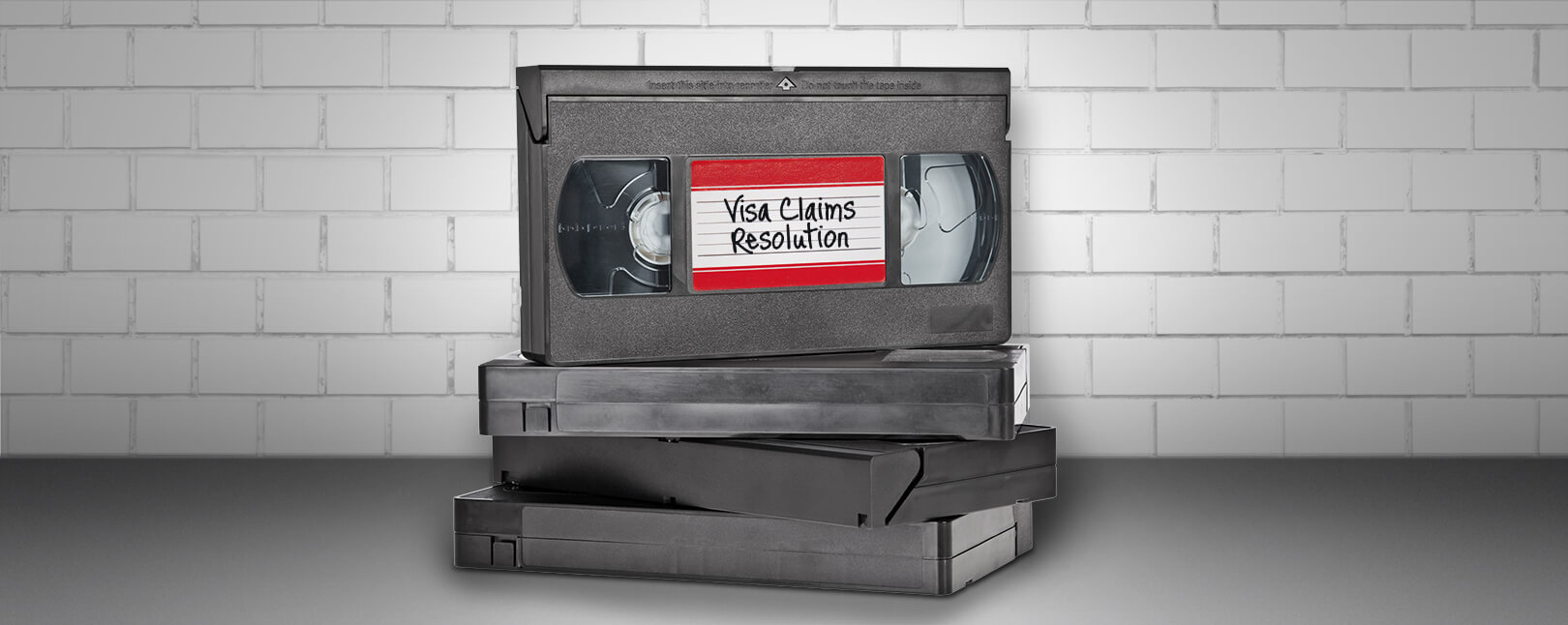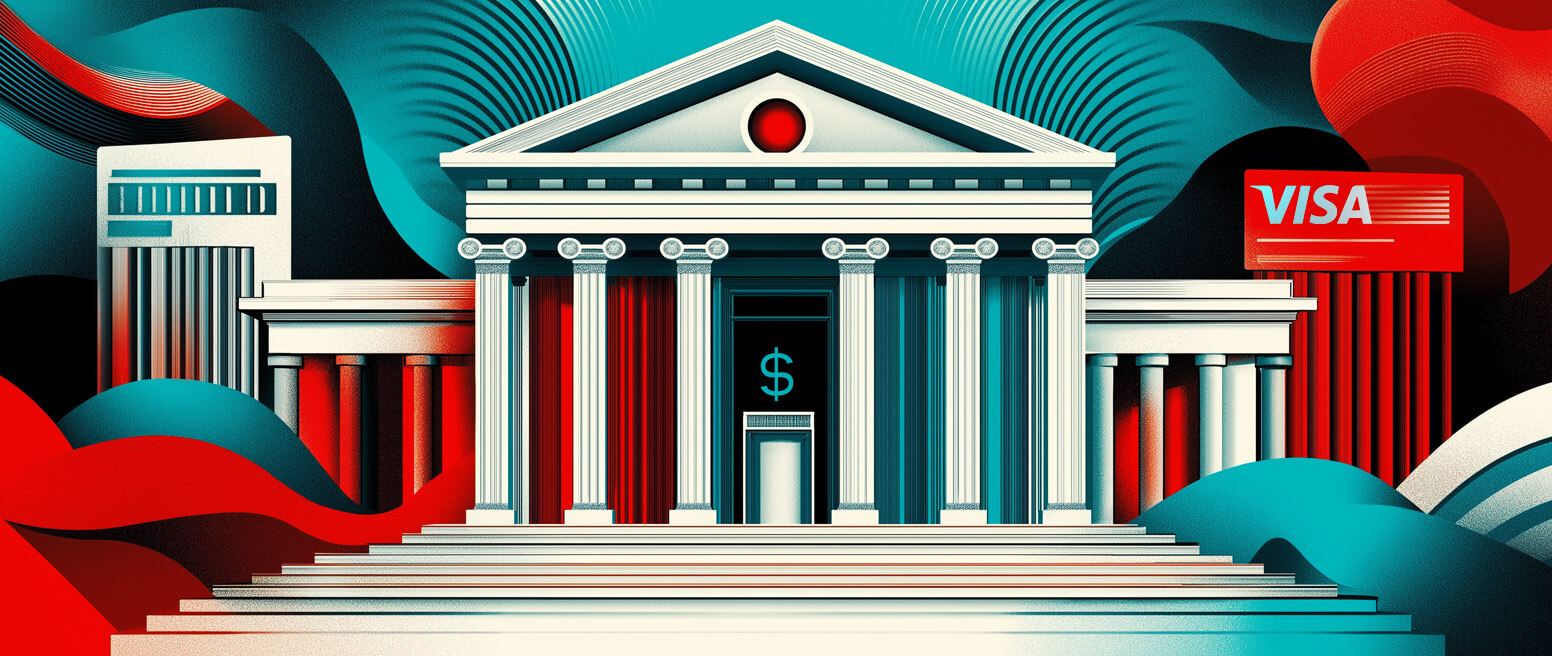Visa Claims Resolution Revisited
Back in 2018, Visa introduced their Visa Claims Resolution—or VCR—initiative. The aim of VCR was to simplify the chargeback process by shifting from the current litigation-based model to a liability assignment model.
The company promised that VCR would declutter and simplify the dispute process, and even help merchants fight back against illegitimate chargebacks. Does the technology deliver on this promise, though?
For a quick answer, here’s a video rundown on Visa Claims Resolution created with Lloyds Bank, featuring Chargebacks911 COO and Co-Founder Monica Eaton:
Of course, that barely scratches the surface. Today, we’re going to dig a little deeper into the legacy of Visa Claims Resolution. We’ll see how it influences policies, best practices, and examine the legacy of this massive payments industry rule change.
Recommended reading
- Verifi Order Insight: Using Data to Block Visa Disputes
- Visa Chargeback Rules: Your “A-to-Z” Guide for Visa Disputes
- Visa Chargeback Time Limits: The 2025 Guide
- Rapid Dispute Resolution: Avoiding Chargebacks With RDR
- What is the Visa Arbitration Process for Chargebacks?
- Visa Acquirer Monitoring Program: Major Visa Updates in 2025
#1 | What is Visa Claims Resolution?
Visa Claims Resolution is a Visa-specific platform that seeks to declutter and streamline the consumer dispute and chargeback resolution process. In simple terms, VCR introduced five definitive changes to the dispute resolution process:
- The timeframe for merchant response was shortened from 45 days to 30 days.
- Certain invalid chargebacks are automatically rejected before processing.
- All cases are routed through two workflow tracks.
- Reason codes were consolidated into four basic dispute categories.
- Merchants are only allowed to challenge fraud and authorization chargebacks if they have clear and definitive evidence that the dispute was in error (or compelling evidence, as it’s often called).
#2 | When Did the Updates Take Effect?
The introduction of VCR was a long process; discussion of the technology goes back to at least 2015, while the system was originally intended to go live in October 2017. VCR was delayed in most markets, with only Hong Kong and New Zealand seeing VCR implemented according to the original timeline.
VCR was globally mandated on April 15, 2018. It has been in effect since, and is now standard practice for global Visa transactions.
#3 | Why Was a New System Necessary?
Chargebacks are part of a decades-old process that hasn’t changed much since its inception in the mid-70s. While adequate for its time, the previous system wasn’t flexible enough to handle the volume and complexity of the contemporary payments industry.
VCR implementation updated chargeback processing for the eCommerce age. It applied automated tools to improve resolution speed and filter fraudulent chargebacks out of the process.
#4 | Did the Terminology Change?
Yes. In fact, some fundamental vocabulary associated with the dispute process changed under VCR, which could prove highly confusing during the transition period:
| Current Defined Term | New Defined Term |
| Chargeback | Dispute |
| Representment | Dispute Response/Pre-Arbitration |
| Chargeback Reversal | Dispute Reversal |
| Representment Rev/Adjustment | Dispute Response Reversal |
The most confusing element was probably the rebranding of chargebacks to disputes. Under the preexisting system, the term "dispute" was commonly used interchangeably with "representment” by many merchants. In a post-VCR environment, it’s crucial to specify that a dispute has a very specific meaning, and should not be used in other contexts.
In the end, though, chargebacks are still chargebacks. VCR has simply changed the name.
#5 | Who Did VCR Affect?
VCR adoption is mandatory for all merchants, issuers, and acquirers worldwide who handle Visa transactions. That includes both card-present and card-not-present exchanges.
We should point out that card-present chargebacks are relatively uncommon. Most chargebacks are filed against eCommerce merchants. As a result, VCR has primarily impacted the online environment.
VCR affects customers as well. For example, the Visa Resolve Online system, or VROL, might automatically reject a customer dispute if it doesn't meet certain criteria (as specified in item 11 below).
#6 | What Role Did VROL Play?
Visa Resolve Online plays an even more prominent role than before. This platform should be used for the following situations:
- Issuing banks must request a Transaction Inquiry through VROL before initiating a dispute.
- Financial messages to issuers and acquirers are available through VROL.
- Issuers and acquirers have the option of initiating financial messages via VROL in combination with internal fraud report submissions.
While VROL was previously just one avenue to facilitate disputes under the old system, VCR makes it the central means of communication between issuers and acquirers in the dispute process.
Learn more about Visa Resolve Online#7 | Did VCR Speed Up Dispute Resolution?
According to Visa, the dispute resolution timeline has been significantly reduced since VCR’s implementation.
Before VCR, it took about 46 days to resolve an average chargeback. However, some resolutions could take over three months, depending on the case's complexity. This was a problem owing to the previous statutes that allowed banks up to 45 days to respond to a Visa dispute.
VCR regulations reduced that timeframe to 30 days, bringing faster resolutions by default.
#8 | How Did Disputes Work Before VCR?
The previous chargeback process was litigation-based, meaning the dispute system functioned much like a courtroom trial:
- One party (the cardholder) accused another party (the merchant) of wrongdoing.
- The accused party could accept the chargeback (effectively pleading ‘guilty’) or fight the chargeback through the representment process.
- Both sides would present evidence with the cardholder’s issuing bank as judge and jury.
- The bank would make a ruling, either upholding the chargeback in favor of their customer or overturning it in favor of the merchant.
- If the chargeback was upheld, the merchant could appeal that decision to Visa, much like appealing to a higher court.
- The dispute would then be elevated through an arbitration process, in which the card scheme would make a final ruling.
Visa Claims Resolution helped streamline and simplify the process. Plus, with the use of the Verifi Order Insight platform, many potential disputes can be resolved before they start.
Learn more about Verifi Order Insight#9 | What is a “Liability-Based” System?
Rather than the previous litigation-based system, Visa describes the dispute resolution process through VCR as a “liability-based” one.
One of the core components of the Visa Claims Resolution initiative is a model that automatically assigns liability in as many cases as possible. Only the more complex cases that require human oversight will be redirected to the litigation-based dispute process.
#10 | Can VCR Proactively Eliminate Invalid Disputes?
Merchants should already be familiar with VROL. The Visa Merchant Purchase Inquiry platform, or VMPI, was an intuitive addition to this platform, which can stop illegitimate claims from becoming chargebacks. Still, merchants must actively enroll in the program to receive this benefit.
Through VMPI, Visa maintains access to additional transaction details if a cardholder complaint arises. VMPI then assesses each complaint before it becomes a dispute, comparing the case against established chargeback rules. Cases that do not meet the criteria are automatically blocked.
#11 | Why Would a Dispute Be Blocked Under VCR?
There are two primary reasons a case would be automatically rejected under the Visa Claims Resolution guidelines:
- The customer filed after the allowable post-purchase timeframe had elapsed.
- Customer filed after a merchant return has been issued.
As long as it's noted in the Visa Resolve Online system that a return was initiated, it should block any attempted chargeback on that transaction. That's great news...but it's still not perfect. After all, VROL cannot auto-reject a deliberate case of chargeback fraud.
#12 | What Reason Codes Changed Under VCR?
Visa Claims Resolution consolidated the company’s previous roster of chargeback reason codes into four fundamental dispute categories:
- Fraud
- Authorization
- Processing Errors
- Consumer Disputes
The reason codes are broken up into general, related categories. The aim here was to streamline the list of reason codes, and make it easier for merchants and banks to identify chargeback reasons.
View the complete list of Visa reason codes#13 | How Does VCR Affect Dispute Category Assignment?
Visa Resolve Online operates by separating cases based on their dispute category and routing them through one of two workflow tracks. Every case processed through VROL is resolved via Allocation or Collaboration.
This represented one of VCR’s most radical departures from the previous chargeback resolution model. With traditional chargeback disputes, the issuer was required to perform a manual review of each case and adjudicate it based on available evidence. VROL provides the framework to automate this process.
#14 | What is the Allocation Workflow?
This track is used for disputes assigned to a “Fraud” or “Authorization” reason code, as explained in Question #12. Most disputes through Visa Claims Resolution will be assigned to this workflow.
Visa runs automated checks of filed disputes using the information processed through VROL. This confirms if they fall within regulated timeframes and that no previous refund was issued. Flagged cases are automatically blocked and will not become a chargeback, which cuts down on the overall number of cases.
If any dispute passes the initial checks, liability will automatically be assigned to the merchant. The liability is “allocated” to the party responsible.
#15 | What is the Collaboration Workflow?
This dispute processing track is for cases tagged with a “Customer Dispute” or “Processing Errors” reason code. It’s very similar to the pre-VCR, liability-based dispute process.
Using the collaboration track, issuers file Dispute Requests through VROL, and acquirers must respond through VROL promptly. Most dispute reasons require a questionnaire; some still need supporting documentation from issuers and/or acquirers.
#16 | How Do VCR Workflows Affect Merchants?
Before Visa Claims Resolution, merchants could contest any fraud chargebacks, whether they possessed compelling evidence or not. Now, with the Allocation workflow in place, defending against the dispute will only be allowed if the merchant can provide definitive proof that the chargeback is illegitimate.
Under Visa VCR, merchants are limited in their ability to respond. This makes it more critical than ever that merchants be proactive about filing and maintaining transaction evidence.
#17 | How Does VCR Work With VMPI?
The Visa Merchant Purchase Inquiry process allows Visa to access additional transaction data in a dispute or simply issue a customer credit (based on the merchant's settings).
VMPI was a massive change. It allowed the merchant to easily bypass the dispute when applicable, allowing for faster and more collaborative resolution.
Still, more complicated cases often need manual processing and representment, especially when the merchant and issuer cannot resolve them. These could require arbitration by Visa to determine; a complicated, time-consuming, and expensive process.
#18 | What Were the Main Benefits of VCR?
Simply put, all parties involved in a dispute benefit from decreased processing time and expenses. With Visa Claims Resolution, merchants were promised:
- Shorter timeframes for dispute resolutions, meaning less time spent with resources in limbo.
- A simplified dispute process due to fewer and more specific reason codes.
- Automated blocking of invalid disputes before processing.
- Greater accuracy through prepopulated transaction data.
- Better use of operations staff and resources.
- Easier and more consistent communication via VROL.
#19 | How Effective was VCR?
Survey data from the 2019 Chargeback Field Report found that 82% of merchants surveyed believed that the Visa Claims Resolution process had “little to no impact on chargeback management.” Less than 20% of merchants noted a slight decline in Visa chargebacks after VCR, while over 55% reported no decline in chargebacks.
It’s true that these statistics are now dated. However, it gives the impression that, regardless of any real benefit, merchants did not notice any meaningful change. The positive effects of Visa Claims Resolution might have been diluted by the general, long-term upward trend in chargeback issuances.
VCR is a vast improvement over previous systems, but more work is required to make the dispute process fair for all parties involved.
#20 | What Do Merchants Think of VCR?
Frankly, merchant response to Visa Claims Resolution has been lukewarm at best.
Why is it that a platform designed to streamline and improve the dispute process could fail to provide the one benefit everyone needs most: an overall reduction in the frequency of chargebacks? Well, the answer is a bit complicated.
Merchants still bear the lion’s share of the liability for chargebacks and will continue for the foreseeable future. Any improvement to the formerly bloated and sluggish dispute process is undoubtedly welcome. That said, the initiative didn’t really address the elephant in the room: friendly fraud.
Friendly fraud accounts for up to 60% of all chargebacks filed as of 2022. In order to properly address and respond to this growing problem, merchants should focus on eliminating merchant error from their daily operations and invest in dynamic chargeback prevention and management strategies.
Need a Hand?
Visa Claims Resolution compliance has exacting requirements. It’s something that many merchants are unable—or unwilling—to attempt on their own. Not to worry, though: help is here.
The experts at Chargebacks911® know how to leverage evolving card network rules and supporting data to maximize the impact of every response.
We at Chargebacks911 are authorized VMPI facilitators. Our clients enjoy the benefits of easy, instant integration with the Visa Merchant Purchase Inquiry plugin and the Visa Resolve Online platform, allowing for fast, easy compliance in a post-VCR environment.
Whether you’re in the market for a Visa Claims Resolution-supported VMPI facilitator or end-to-end chargeback management, Chargebacks911 offers the services you need. Ready to see what we can do for you? Request your free dispute analysis below and start saving today.















